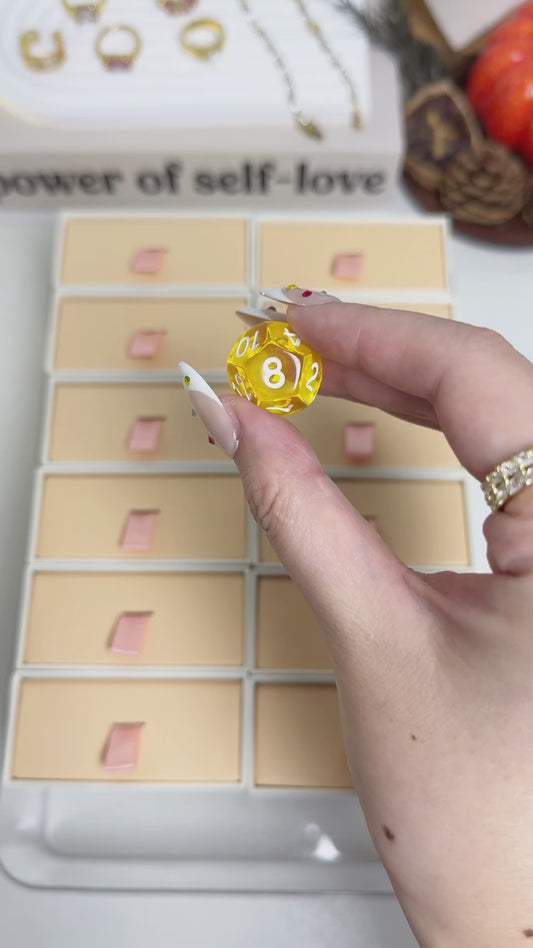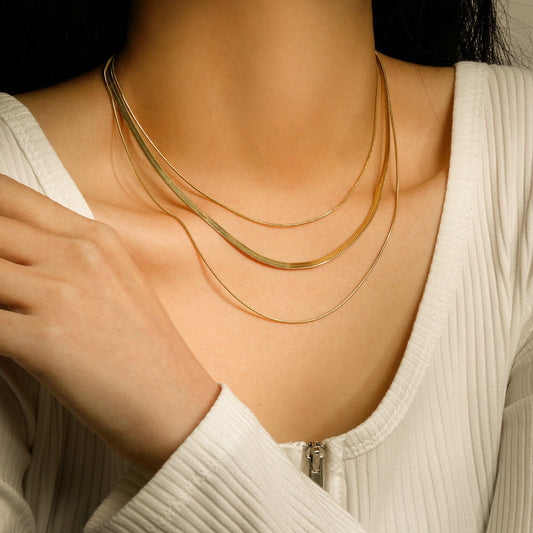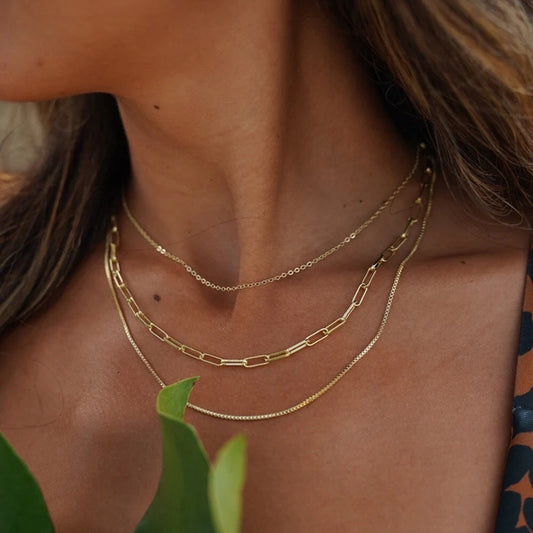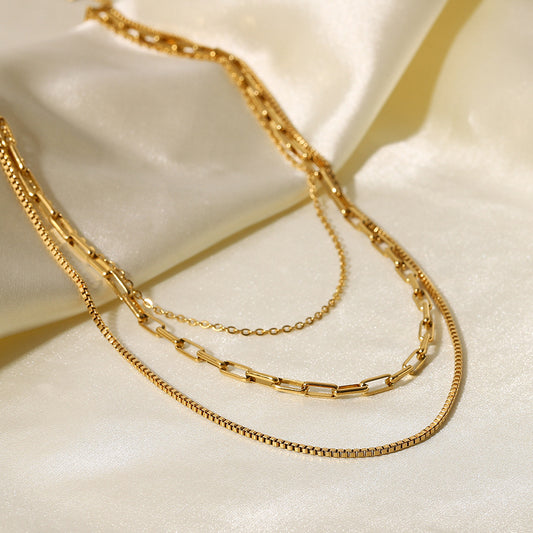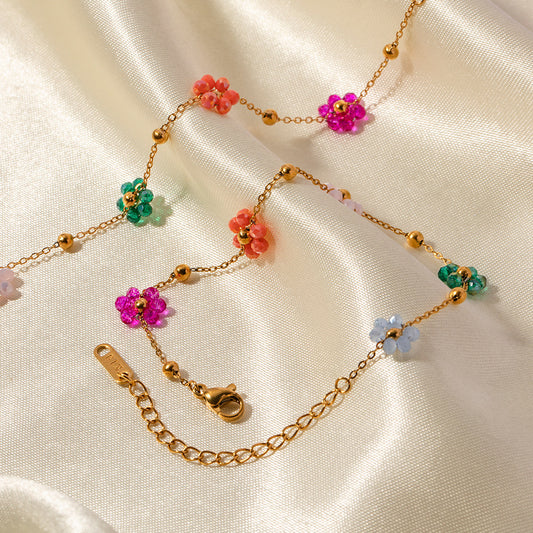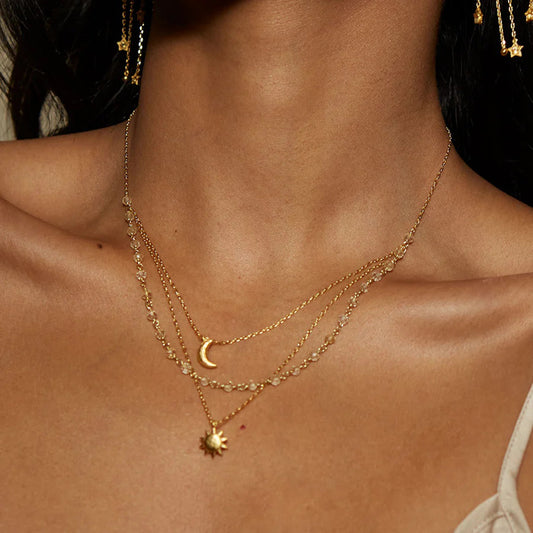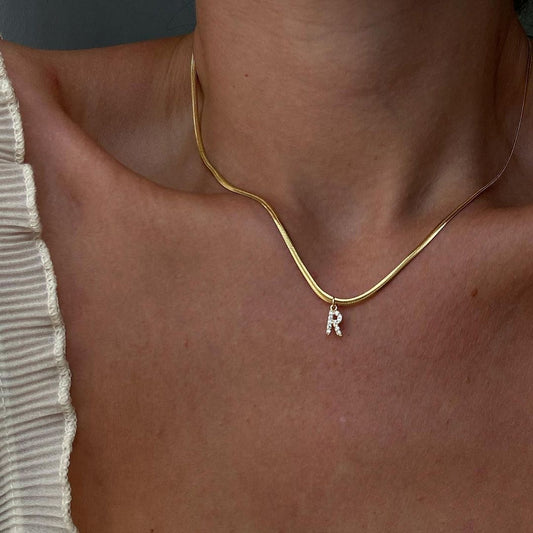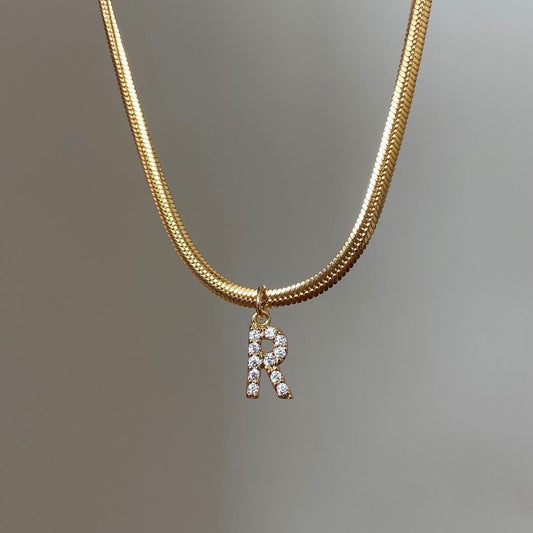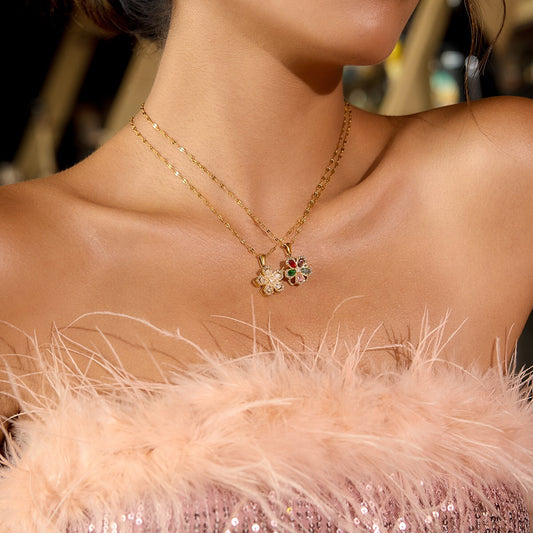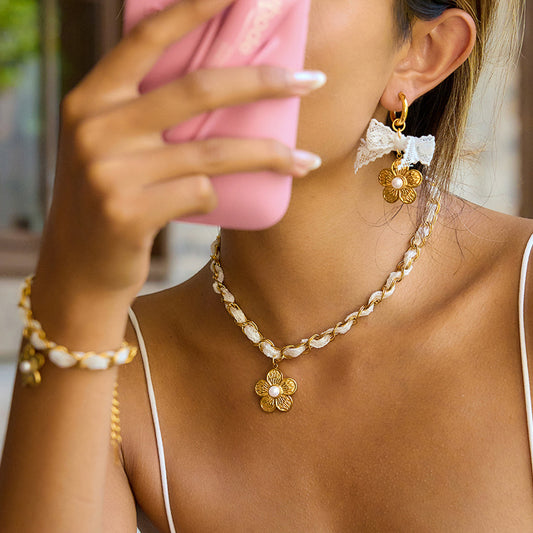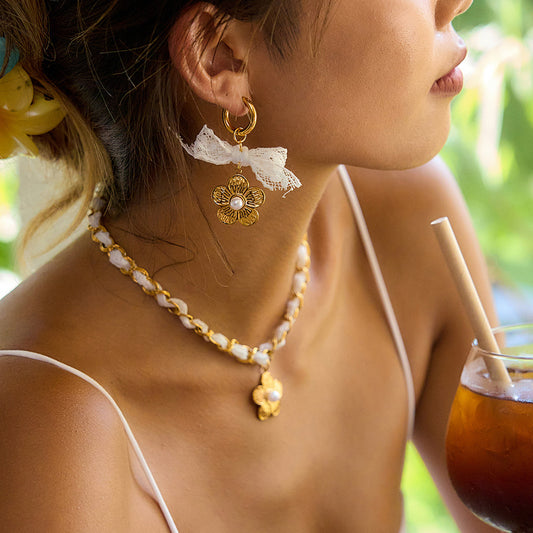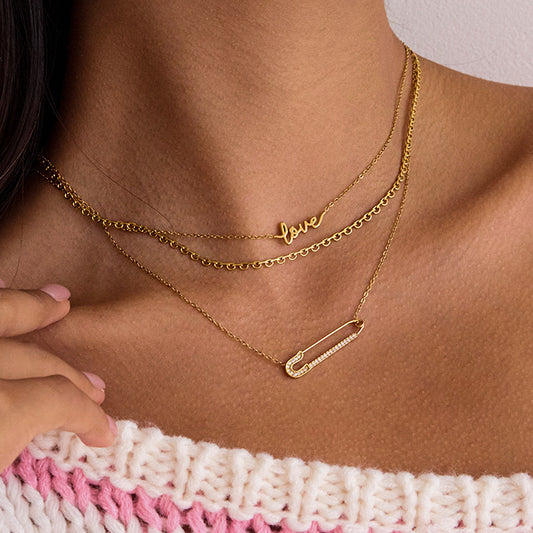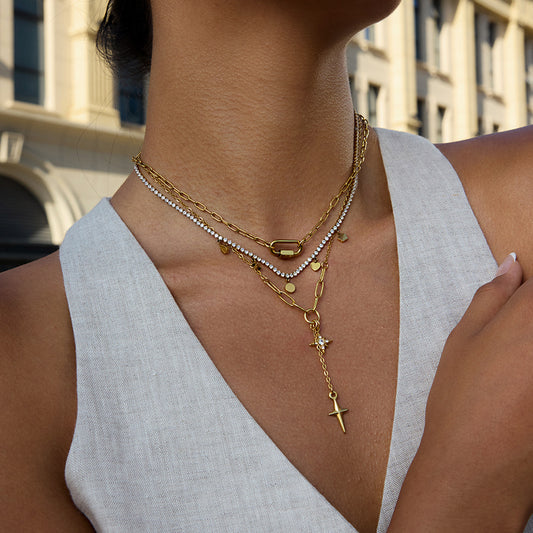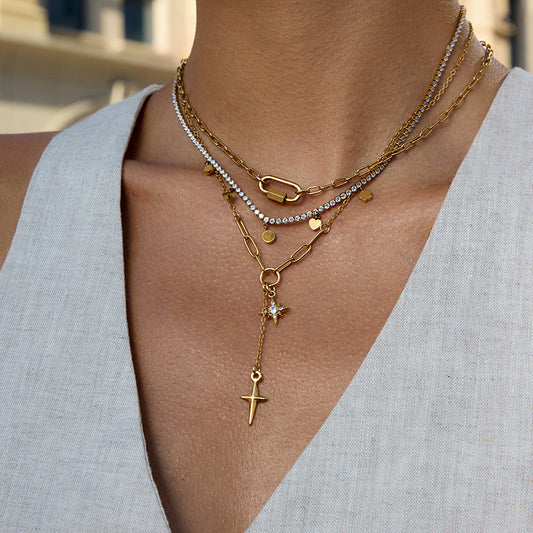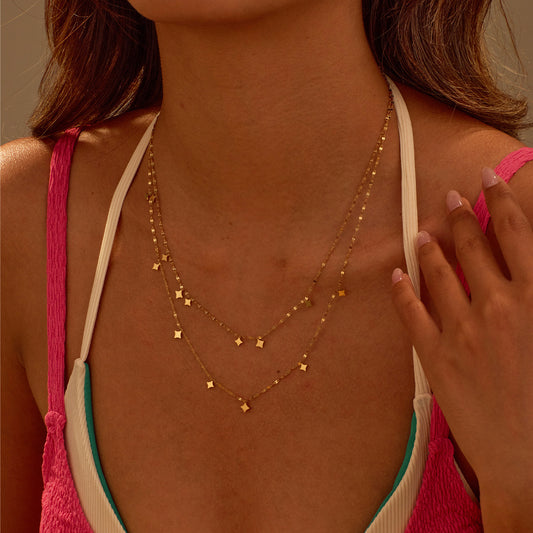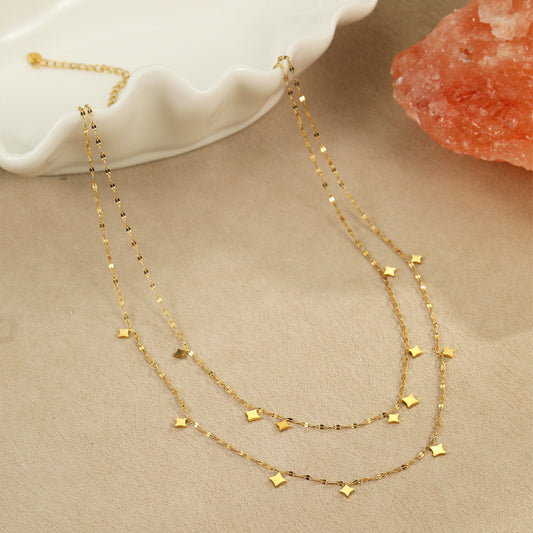An aquamarine necklace isn’t just a piece of jewelry—it’s a wearable slice of the sea. With its soft blue-green hue (reminiscent of sun-dappled ocean waves), aquamarine has captivated jewelry lovers for centuries, blending delicate beauty with deep symbolism. Aquamarine Jewelry Market size was valued at USD 2.5 Billion in 2024 and is projected to reach USD 4.3 Billion by 2033, exhibiting a CAGR of 6.2% from 2026. Whether you’re drawn to a dainty aquamarine pendant for everyday wear or a statement necklace with a large, faceted stone for special occasions, this gem’s ethereal glow adds a touch of serenity to any outfit. It’s the perfect accessory for anyone who wants to carry a little piece of the ocean’s calm with them—wherever life takes them.

What Makes an Aquamarine Necklace Special?
Aquamarine’s unique charm comes from its connection to the sea, its gentle color, and its rich symbolic history. Unlike bolder blue gems (like sapphire) or brighter greens (like emerald), aquamarine’s soft blue-green tone feels approachable and versatile—like a breath of fresh air.
Key Traits of Aquamarine Necklaces
-
Oceanic Hue: Aquamarine’s color ranges from pale, almost clear blue (like shallow tropical waters) to deeper teal-blue (like the open ocean). This natural variation means every aquamarine necklace is one-of-a-kind, with no two stones looking exactly alike.
-
Symbolic Meaning: For millennia, aquamarine has been linked to the sea gods (ancient Greeks and Romans associated it with Poseidon/Neptune) and believed to bring calm to sailors. Today, it’s still seen as a stone of tranquility—wearing an aquamarine necklace can feel like a daily reminder to stay grounded amid chaos. It’s also tied to courage, making it a meaningful gift for someone embarking on a new chapter (a new job, move, or relationship).
-
Durability: Aquamarine ranks 7.5–8 on the Mohs scale, making it durable enough for everyday wear (unlike softer gems like opal or pearl). With proper care, an aquamarine necklace can last for decades—even becoming a family heirloom.
-
Versatility: Its soft color pairs beautifully with nearly every metal (silver, gold, rose gold) and outfit. A pale aquamarine pendant works with a white t-shirt and jeans; a deeper aquamarine necklace complements a formal gown.

Popular Styles of Aquamarine Necklaces
Aquamarine necklaces come in designs to suit every taste, from minimalist to dramatic. Here are the most beloved styles:
1. Aquamarine Pendant Necklace (Everyday Elegance)
The most popular style—simple, versatile, and perfect for daily wear:
-
Design: A single aquamarine stone (round, oval, or pear-cut) suspended from a thin metal chain (silver, gold, or rose gold). The stone size ranges from 5mm (tiny, delicate) to 12mm (substantial enough to make a statement). Settings are often pronged (to maximize light exposure) or bezel-set (for extra durability).
-
Best For: Minimalists, office wear, or anyone new to aquamarine. Silver chains enhance aquamarine’s cool blue tones, while gold adds warmth to deeper teal hues.
-
Why It Works: It’s the "wardrobe workhorse" of aquamarine necklaces—easy to throw on, never overwhelming, and always adds a touch of elegance. Many people opt for a pendant with a small aquamarine as a daily reminder of calm.

2. Aquamarine Tennis Necklace (Timeless Glamour)
For a sleek, sophisticated look:
-
Design: A continuous line of small, uniform aquamarine stones (3–5mm) set in a metal chain (usually silver or white gold). The stones are often channel-set (held in a metal groove) for a smooth, seamless appearance.
-
Best For: Formal events (weddings, galas), or anyone who loves understated luxury. It’s a modern alternative to a diamond tennis necklace, with a softer, more ethereal vibe.
-
Why It Works: The continuous line of aquamarine stones catches light beautifully, creating a subtle glow that’s eye-catching without being flashy. It pairs perfectly with a strapless dress or a crisp white blouse.
3. Aquamarine Statement Necklace (Bold & Dramatic)
For when you want to make a splash:
-
Design: A large, focal aquamarine stone (15mm+)—often with a unique cut (cushion, emerald, or trillion)—surrounded by smaller accent stones (diamonds, white topaz, or tiny aquamarines). The chain is usually thicker (to support the stone) and may feature intricate metalwork (filigree, twists) for extra drama.
-
Best For: Special occasions (birthdays, anniversaries, red-carpet moments), or anyone who loves bold jewelry. Deeper teal aquamarines work best for statement pieces, as their color is more intense.
-
Why It Works: The large aquamarine stone is the star of the show, drawing attention to its beautiful hue and clarity. It’s a conversation starter—perfect for someone who wants their jewelry to tell a story.
4. Aquamarine Layered Necklace (Bohemian Charm)
For a relaxed, trendy look:
-
Design: Multiple thin chains (of varying lengths) with small aquamarine accents—e.g., a short chain with a tiny aquamarine bead, a medium chain with a small pendant, and a long chain with a delicate aquamarine drop. Chains can be mixed metals (silver and gold) for a bohemian feel.
-
Best For: Casual weekends, festivals, or anyone who loves layered jewelry. It’s a great way to incorporate aquamarine into a more eclectic look.
-
Why It Works: The layered chains add texture and depth, while the small aquamarine accents provide pops of color. It pairs beautifully with a v-neck sweater, a flowy maxi dress, or a cropped top.

5. Aquamarine Birthstone Necklace (Meaningful & Personal)
A thoughtful choice for March birthdays or milestones:
-
Design: An aquamarine stone (often paired with a small birthstone charm for other months) set in a chain with engraved details (a name, birthday date, or meaningful phrase). The chain may also feature tiny metal charms (stars, hearts, or anchors) for extra personality.
-
Best For: Birthday gifts, Mother’s Day (with kids’ birthstones), or self-gifting. It’s a meaningful way to celebrate a March birthday or honor a loved one born that month.
-
Why It Works: It’s personal and sentimental—more than just a necklace, it’s a keepsake. The aquamarine’s symbolism (calm, courage) adds extra weight, making it a gift that feels intentional.
How to Choose the Perfect Aquamarine Necklace
Selecting an aquamarine necklace is about balancing color, style, and practicality. Follow these steps to find your ideal piece:
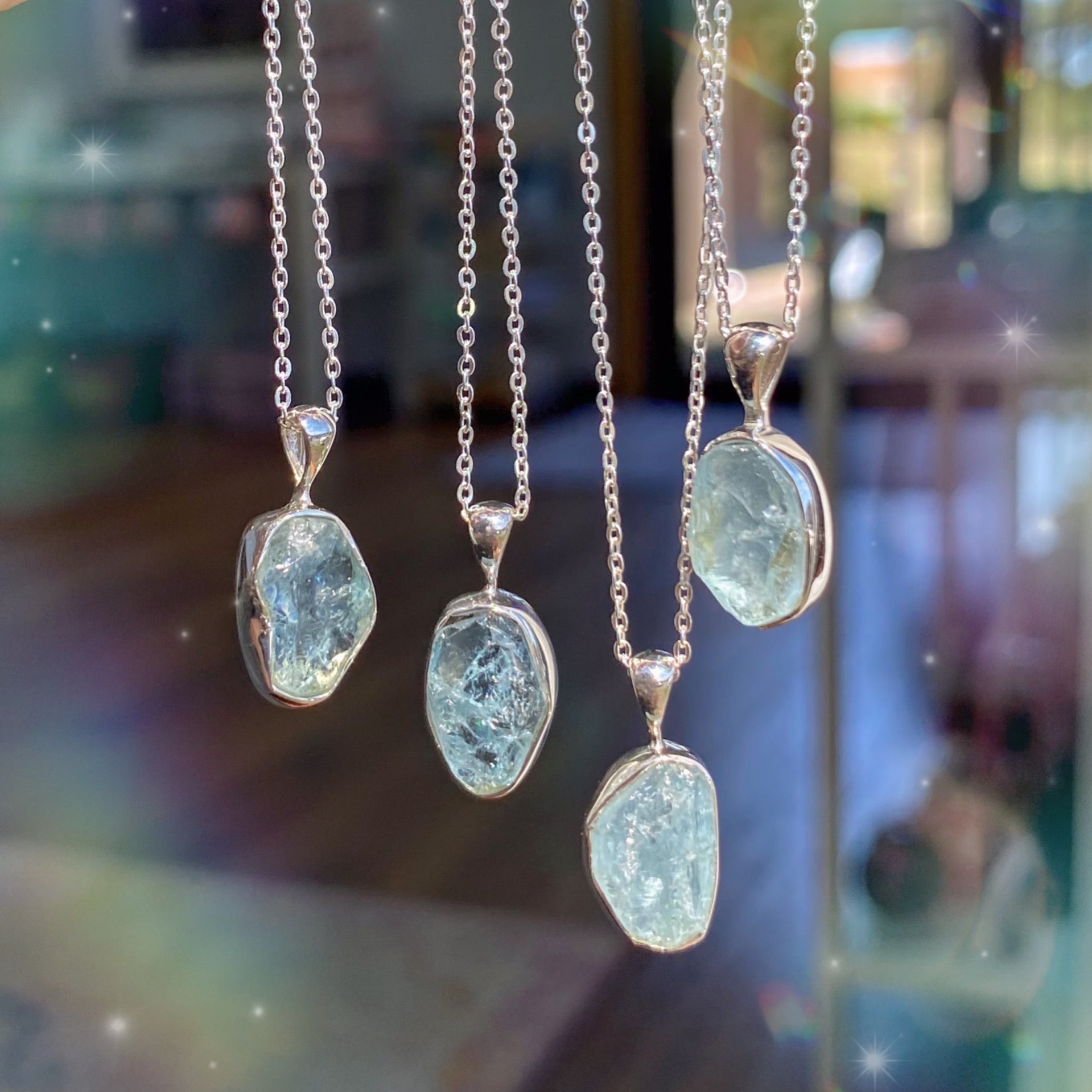
Step 1: Pick the Right Aquamarine Color
Aquamarine’s color is the most important factor—choose based on your style and the occasion:
-
Pale Blue Aquamarine: Soft, delicate, and perfect for everyday wear. It pairs beautifully with silver and looks great with casual outfits.
-
Medium Blue-Green Aquamarine: Versatile, with enough color to stand out but not overwhelm. Works for both casual and semi-formal occasions, and pairs with any metal.
-
Deep Teal Aquamarine: Rich, intense, and ideal for special occasions. It complements gold and rose gold, adding warmth and drama to formal looks.
Step 2: Choose a Chain Length
The chain length affects how the necklace sits on your neck and complements your outfit:
-
Choker Length (14–16 inches): Sits high on the neck, perfect for pairing with v-neck tops or strapless dresses. Great for showcasing a small aquamarine pendant.
-
Princess Length (16–18 inches): The most popular length—sits at the collarbone. Works with nearly every neckline (crewneck, v-neck, scoop neck) and is ideal for everyday wear.
-
Matinee Length (20–24 inches): Sits below the collarbone, perfect for layering or pairing with high-neck tops (turtlenecks, crewnecks).
-
Opera Length (28–36 inches): Long enough to double up (for a layered look) or wear as a single long chain. Great for formal events or adding drama to a simple outfit.
Step 3: Select the Right Metal
The metal should enhance aquamarine’s color and match your skin tone:
-
Silver/White Gold: Best for pale to medium blue aquamarine. These cool metals make the gem’s blue tones pop, creating a fresh, oceanic look. Perfect for cool skin tones (pink/blue undertones).
-
Gold/Rose Gold: Ideal for deeper teal aquamarine. Warm metals add richness to the gem’s green-blue hue, creating a romantic, luxurious vibe. Great for warm skin tones (yellow/peach undertones).
Step 4: Consider Your Lifestyle
-
Active Lifestyles (Gym, Hiking, Cooking): Opt for a bezel-set aquamarine pendant or a tennis necklace (durable settings that won’t catch on clothing). Avoid statement necklaces with large, protruding stones.
-
Office Wear: A small aquamarine pendant or a delicate tennis necklace works best—subtle enough for meetings, but still adds personality.
-
Special Occasions: Go for a statement necklace or a larger pendant with accent stones—something that will stand out in photos and complement formal attire.
Step 5: Set a Realistic Budget
Aquamarine necklaces range in price from \(100 to \)5,000+, depending on stone size, quality, and metal:
-
Budget Under $300: Small aquamarine pendant (5–7mm) in silver or gold-plated metal.
-
Budget \(300–\)1,000: Medium aquamarine pendant (8–10mm) in sterling silver or 10k gold, or a delicate aquamarine tennis necklace.
-
Budget Over $1,000: Large aquamarine statement necklace (12mm+ stone) in 14k+ gold, or a necklace with accent diamonds.
How to Care for Your Aquamarine Necklace
Aquamarine is durable, but proper care will keep your necklace looking beautiful for years:
Daily Care Tips
-
Remove Before Activities: Take off the necklace before swimming (chlorine can dull the gem’s color), showering (soap builds up on the stone), working out (sweat can tarnish metal), or doing chores (cleaning products scratch the gem or metal).
-
Wipe After Wear: Gently wipe the aquamarine stone and chain with a soft microfiber cloth to remove oil, lotion, or perfume. This keeps the gem shiny and the metal from tarnishing.
-
Avoid Harsh Chemicals: Keep the necklace away from perfume, hairspray, and nail polish remover—these can damage the gem’s surface or discolor the metal.
Weekly Cleaning
-
Mix warm water with a drop of mild dish soap (or gemstone-specific cleaner) in a small bowl.
-
Soak the necklace for 10–15 minutes—this loosens dirt from the stone’s setting and the chain.
-
Gently scrub the aquamarine stone with a soft-bristled toothbrush (use light pressure to avoid scratching). For the chain, use a soft cloth to wipe away dirt.
-
Rinse under warm running water and pat dry immediately with a microfiber cloth.
-
Avoid ultrasonic cleaners—they can damage aquamarine’s clarity or loosen the stone from its setting.
Storage Tips
-
Store Separately: Keep the aquamarine necklace in a soft jewelry pouch or separate compartment to avoid scratching from harder gemstones (e.g., diamonds, sapphires) or metals.
-
Avoid Sunlight: Prolonged exposure to direct sunlight can fade aquamarine’s color over time—store it in a dark drawer or pouch when not in use.
-
Prevent Tangles: For chain necklaces, fasten the clasp before storing to avoid tangles. Use a jewelry tree or hanging organizer for longer chains.
Frequently Asked Questions About Aquamarine Necklaces
Q1: Is aquamarine a good choice for sensitive skin?
A: Yes—aquamarine itself is hypoallergenic. If your necklace has a metal chain, opt for sterling silver, 14k+ gold, or platinum (avoid nickel-plated metal, which can cause irritation). Most aquamarine necklaces are safe for sensitive skin.
Q2: Will aquamarine fade over time?
A: Aquamarine is stable and won’t fade with normal wear, but prolonged exposure to sunlight or heat (e.g., leaving it in a hot car) can cause its color to lighten. To prevent this, store it away from sunlight and remove it before using heat tools (hair dryers, straighteners).
Q3: Can I wear an aquamarine necklace with other gemstone jewelry?
A: Absolutely! Aquamarine pairs beautifully with other soft, cool-toned gems:
-
Pearl: Aquamarine and pearl create a classic, nautical look—perfect for summer.
-
Amethyst: Soft blue-green and purple complement each other, adding a bohemian vibe.
-
White Topaz: Adds extra sparkle without overpowering aquamarine’s delicate color.
Avoid pairing it with bold, warm-toned gems (e.g., ruby, orange sapphire)—they can clash with aquamarine’s soft hue.
Q4: How do I know if my aquamarine necklace is real?
A: Real aquamarine has a few key traits:
-
Color: It has a soft, natural blue-green hue (not perfectly uniform—dyed stones often look too bright or splotchy).
-
Clarity: Real aquamarine is often eye-clean (no visible inclusions), but may have small, natural flaws (a sign of authenticity).
-
Hardness: It scratches glass (fake aquamarine, like glass or plastic, won’t).
For high-value pieces, ask for a certificate from a reputable gemological lab (GIA, AGL) to verify authenticity.
Q5: Is an aquamarine necklace a good gift?
A: Absolutely! It’s a thoughtful gift for multiple occasions:
-
March Birthdays: As the March birthstone, it’s a personal, meaningful choice.
-
New Beginnings: Its symbolism of courage makes it great for graduates, new job starters, or anyone moving to a new city.
-
Anniversaries: Aquamarine is the 19th wedding anniversary gem, making it a sweet gift for long-term couples.
It’s also versatile enough to suit nearly any style, so you don’t have to worry about it not fitting the recipient’s taste.
Conclusion: Your Personal Slice of the Sea
An aquamarine necklace is more than jewelry—it’s a daily reminder of the ocean’s calm, the courage to embrace new beginnings, and the beauty of soft, understated elegance. Its ethereal color works with every outfit, its durability makes it perfect for everyday wear, and its symbolism adds depth that goes beyond aesthetics.
Whether you’re wearing a tiny aquamarine pendant to the office, a layered necklace to a weekend brunch, or a statement piece to a wedding, it will always feel like a little piece of serenity around your neck. With proper care, it may even become an heirloom—passed down with stories of the moments it accompanied: a first job, a birthday, a quiet day when you needed a reminder to stay calm.
In a world that’s often chaotic, an aquamarine necklace is a small, beautiful way to carry peace with you. And that’s the magic of it—it’s not just a necklace. It’s a feeling.




